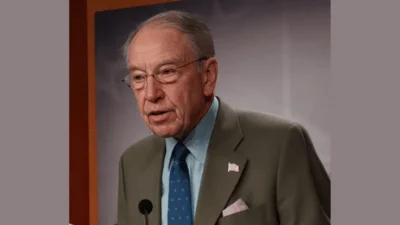WASHINGTON, DC - The Energy and Power Subcommittee, chaired by Vice Chairman Pete Olson (R-TX), today held a hearing examining the historical perspectives of the Federal Power Act. The hearing builds on a June committee letter to Federal Energy Regulatory Commission (FERC) Chairman Norman Bay requesting information on the current and future state of electricity markets. Members today examined FERC’s deregulation of electricity in the 1980s and 1990s and how the changes of the past have shaped wholesale electricity markets today.
“We won’t solve the serious problems facing markets overnight. We won’t sort out the difference between the real problems and empty allegations today either. Rather, this hearing will set the stage for our work on all these topics," said Vice Chairman Olson. “This could be a great opportunity for this committee. We can bring new-and much-needed- focus to today’s power markets."
Environment and the Economy Subcommittee Chairman John Shimkus (R-IL) stated his enthusiasm for the panel of witnesses, stating, “I’m really enjoying this panel. This is a great topic cause there’s issues in evolution and processes. … We’ve been burnt too much by vagueness of law and there’s really a desire by many of us to be more specific because in other agencies we feel they’ve overstepped."
Witnesses testify during today’s hearing
In his testimony, Doug Smith, Partner at Van Ness Feldman LLP, stated, “Although Part II of the Federal Power Act has been amended over the years since its enactment in 1935, its core provisions on FERC jurisdiction and its core standards for reviewing rates, terms and conditions of transmission service and wholesale sales have remained largely the same. The Commission has deployed these flexible authorities, with targeted statutory amendments by Congress, to adjust the Federal regulatory approach in the face of changes in the power sector’s organization and changes in technology."
Former Deputy Secretary of the Department of Energy Linda Stuntz noted in her testimony that a review of the Federal Power Act may be necessary as market changes occur, stating, “As our economy becomes more electrified, and ever more dependent on reliable and affordable electricity, and as the demand increases for ever cleaner sources of electricity, consideration of whether the policies and lines of jurisdiction embodied in the Federal Power Act remain appropriate is wise and necessary."
Former General Counsel at the Federal Energy Regulatory Commission Susan Tomasky added, “Although the industry has changed considerably in the last twenty years, we find ourselves in some regions with good systems for operating short term markets. … Other regions continue to operate within the state-based regulatory constructs that are largely unchanged from twenty years ago. … Between these two sets of challenges there are many committed, creative individuals, Federal and state regulators, entrepreneurs and market participants who are fully capable of shaping an excellent future for this industry, if a framework for decision-making around these broader issues can be agreed upon."
Clifford M. Naeve, Former Commissioner at the Federal Energy Regulatory Commission discussed FERC’s changing role, “In the course of transforming wholesale energy markets FERC also has transformed itself. FERC has moved from being an agency primarily focused on regulating rates and services, supported by an army of accountants and engineers, to an agency intent on protecting competition, so that wholesale market prices accurately reflect the balance between supply and demand."
Energy and Commerce Committee Chairman Fred Upton (R-MI) concluded, “Today’s hearing laid the foundation for a new effort to take a more comprehensive look at recent developments in the way we generate, transmit, and consume electricity in the United States, and how that system had evolved under the Federal Power Act. Modern electricity markets are unprecedented in scope and scale, allowing us to send electrical energy across the nation both quickly and efficiently. Today, power generated by windmills in Kanas will energize lights and toasters from Georgia to Michigan. Both the committee and FERC have the important responsibility of ensuring that electricity markets function in a reliable and efficient manner."
For more on today’s hearing including witness testimony, and archived webcast, and background memo, click HERE. Related Items
* Federal Power Act: Historical Perspectives
* HEARING: #SubEnergyPower to Examine the Foundations of the Federal Power Act NEXT WEEK




